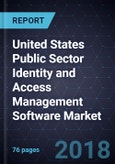The convergence of physical and logical security and identity authentications methods highlights the need to protect both a person’s physical identity credentials as well as their digital identity from potential fraud or loss. Within the government and critical national infrastructure (CNI) sectors, the need for robust identity protections is heightened ever more. This is due to the sensitivity of the data these entities possess and the need to ensure that those accessing this information are permitted to. Public sector customers are typically seen as laggards in terms of technological sophistication; however, the high prevalence of data breaches and cyber attacks against these critical networks and organizations has accelerated the opportunities available to technology vendors looking to enter the public sector and can offer a compelling identity verification and access control solution.
Identity and access management (IAM) software platforms have evolved beyond one-time identity verifications and keycard access systems as the result of the convergence within the security industry. Current IAM solution offerings include software- or cloud-based IAM platforms, which allow public sector customers to choose the solution that best meets the needs of their organization from the standpoint of cloud connectivity, authentication methods, privileged access controls, and type of system integration. Both the government and CNI sectors follow stringent identity and data access regulations that require organizations to maintain a high security posture that protects not only user identities, but all identity data stored within their systems. Additionally, the methods of authentication and access controls within these public sector organizations must meet high security standards to ensure only properly credentialed users are accessing certain data and network systems.
Competitive information includes:
- Short company descriptions and highlights
- Descriptions of changing security business models affecting IAM solutions
- Discussion of specific capabilities used in each IAM solution type
- Partnership initiatives and mergers/acquisitions occurring between vendors
- Industry-specific requirements and system preferences
- Links to corporate Web sites and news items of note
This research service also contains definitions of IAM software solutions for both software- and cloud-based IAM solutions, descriptions of the authentications methods used for verifications, and a succinct conclusions section that highlights trends in the market.
Research Scope
This research service looks into the technical aspects of these IAM solutions, as well as solution capabilities for each integration type, and the various authentication methods used to verify and authenticate a user’s identity and access privileges. This analysis focuses on the United States government and CNI sectors, as these industries carry more specific regulatory requirements and the barriers into the public sector market are higher due to varying purchase and security requirements. The assessment does not include IAM hardware products or maintenance/support services revenue, as these areas are covered in other research services.
Key Issues Addressed
- Which companies are prominent in the IAM software market?
- How has security convergence and changing IAM business models affected current IAM solution offerings?
- Which customer groups are requesting specific system capabilities and integration types?
- What are technology trends are shifting how IAM software solutions are designed and implemented?
- What authentication methods are most prominent and how might these methods shift in the future?
Table of Contents
1. Executive Summary2. Key Findings3. Market Definitions








